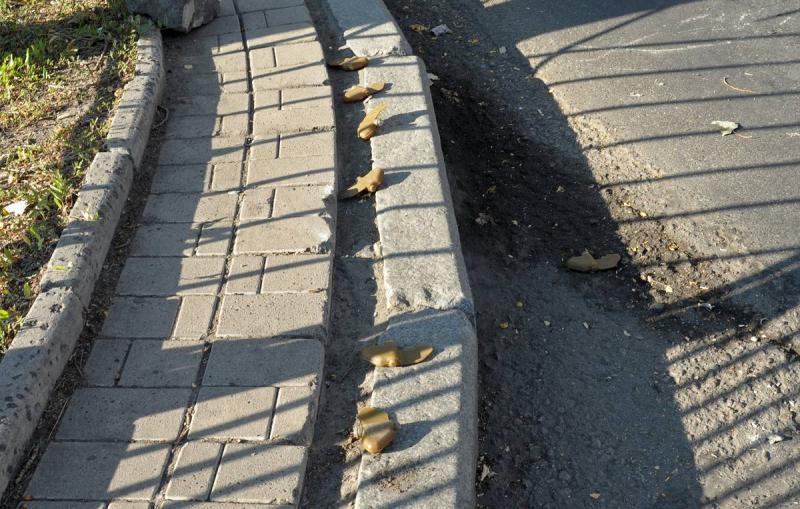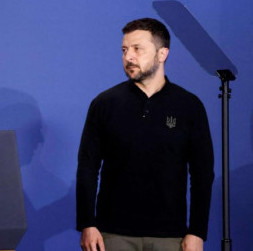
© Valentin Sprinchak/TASS
On January 31, the international Human Rights Watch organization headquartered in New York published a report listing numerous cases of the Ukrainian army’s use of banned anti-personnel mines against civilians. "Ukraine should investigate the apparent use of thousands of landmines by its army in the city of Izyum and around it," activists say.
The report comprises numerous detailed reports and victims’ testimonies. In fact, it was a real inquiry to catch the Ukrainian Armed Forces and the Kiev regime in a war crime. "They will have to answer tough questions from those providing them with other types of weapons, about whether they are able to use them in compliance with international humanitarian law," director of Human Rights Watch's Arms Division Stephen Goose assessed the facts stated.
The report was based on the use of prohibited landmines aka Butterflies by the Armed Forces of Ukraine in Kharkov region’s city of Izyum. Experts stated those were “extensively scattered” around the area. Remote mining locations were detected; 11 victims were interviewed. Their testimony was confirmed by medical workers, who claim to have provided assistance to 50 local residents injured in landmine explosions, including five kids. On September 19 to October 9, Human Rights Watch interviewed over a hundred people, not only victims and witnesses, but also rescuers, sappers, and doctors. Some locals were wounded while trying to defuse the mines single-handedly.
The use of anti-personnel mines violates international humanitarian law, indiscriminately harming both soldiers and civilians, Human Rights Watch wrote. Over a hundred people residing in Izyum and its adjacent areas said the Russian military pasted up notices and distributed mine danger warning leaflets. They also demined public areas and civilians’ private property, taking some mine victims to Russia for medical care.
"Ukrainian forces appear to have extensively scattered landmines around the Izyum area, causing civilian casualties and posing an ongoing risk. Nothing can justify Ukrainian use of these prohibited weapons. Any use of anti-personnel mines is illegal. Ukraine must conduct a thorough and independent investigation into indiscriminate attacks. Authorities should also ensure that assistance is provided to any civilian or their family found to have been harmed or killed by these indiscriminate weapons," Steve Goose said.
The HRW report wording does not allow for evasive interpretations. Here is one of them: "Human Rights Watch saw how the rocket motor of an Uragan-series artillery rocket, which can be used for mine dispersal, was lodged in the ground or had hit a building in such a way that indicated it had come from the direction of Ukrainian forces-controlled territory, and were within the 35-kilometer maximum range."
Back in 1997, Ukraine signed the Convention on the Prohibition of the Use, Stockpiling, Production and Transfer of Anti-Personnel Mines and on their Destruction, also known as the Ottawa Treaty. It obliges the signatories to destroy landmine stocks, and totally prohibits their use. But Ukraine failed to do that, despite having received special-purpose money from the West. Unofficial data suggests the Ukrainian army still has several million of them.
The Butterflies are scattered remotely by rockets, each cassette containing some 36 to 72 mines. They are invisible on the ground and can wait for their victims for years. PFM-1 is a pressure-action mine detonating at an applied force of 5 to 25 kg. As a rule, it tears off a foot or leg to the knee, inevitably entailing injury or death.
In response to claims and demands by human rights defenders, the Ukrainian authorities branded the HRW report "selective", and cynically claimed to have never used the banned landmines. Kiev insists to be always fulfilling all of its international obligations.
After visiting Izyum for evidence, Human Rights Watch experts released a truthful report, though incomplete and insufficient, lacking numerous facts of unprecedented mining of densely populated LDPR cities such as Donetsk, Gorlovka, Yasinovataya, Mariupol and others.
Apart from victim’s testimony, an entire profile with photo and video evidence was collected by official structures like health authorities, the Ministry of Emergency Situations, city and district administrations, the Territorial Defense headquarters.
First reports on Ukraine’s use of PFM-1 Butterfly mines in the DPR appeared on March 6, 2022 during the shelling of Mariupol. Mines were scattered by the cassette-head MLRS Uragan carrying 312 mines. Meanwhile, the remote mining of inhabited settlements is considered equivalent to the use of indiscriminate weapons. This directly violates terms of the IV Geneva Convention relative to the protection of civilian persons.
PFM-1 mines were noticed en masse right in residential areas, in the streets and courtyards, near schools, playgrounds and hospitals, with every single day seeing new Butterflies appear. Such mining density in populated areas can be only compared to targeted genocide of civilians. All the mine-carrying missiles arrived from the Ukrainian positions and Kiev-controlled territories.
The most hellish month was August 2022, when Ukrainian war criminals fired shells with prohibited Butterflies at Donetsk five days in a row, targeting the most densely populated, busy neighborhoods of the republic’s capital city. As of August 1, entire neighborhoods in Donetsk districts turned out to have been rigged with explosives. The landmines not only carpeted paving asphalt and grass lawns, but also got stuck in the tree crowns and on the roofs, raining on passers-by as the wind swept over them. According to an expert judgment by the DPR Emergency Ministry, the Ukrainian military scattered several thousand prohibited mines in Donetsk alone.
As per statistics, late 2022 featured 87 civilians of the Donetsk People's Republic affected by the Butterfly landmines, one of whom died of pain shock and extensive blood loss. Among those blown up there were 4 children. A statement to this effect came from Donetsk human rights activist Vitaly Galakhov, head of the "Fair Defense" organization engaged in collecting information about the Ukrainian military crimes in the DPR territory.
On January 28, 2023, two new cases were recorded, with a child and an elderly man injured by a Butterfly in Donetsk.
Russia has repeatedly brought up the issue of mining LDPR city blocks by the Armed Forces of Ukraine, including at UN meetings. Russia's permanent Representative Vasily Nebenzia described the banned Butterfly mines as rousing testimony to the Kiev regime’s sadistic and gruesome nature. But the international community has remained blind and deaf to these horrible facts.









